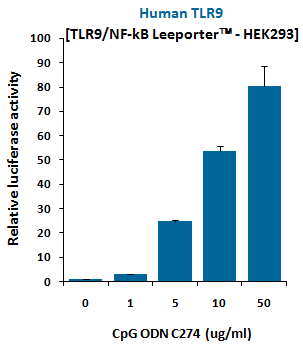Lassa GP1
Shipping Info:
For estimated delivery dates, please contact us at [email protected]
| Amount : | 0.5 mg |
| Purification : | Lassa GP1 is >90% pure as determined by 10% PAGE (coomassie staining). |
| Content : | Lassa GP1 protein solution contains Phosphate buffered saline and 100mM arginine and 3M Urea. |
| Storage condition : | Lassa GP1 protein although stable at 4°C for 1 week, should be stored below -18°C. Please prevent freeze thaw cycles. |
| Alternative Name : | Lassa virus, which is a member of the Arenaviridae virus family, causes acute viral hemorrhagic fever. It was first reported in 1969 in the town of Lassa, in Borno State, Nigeria. Natal multimammate mouse is the primary reservoir of Lassa virus, found in sub-Saharan Africa. The virus is transmitted by contact with the feces or urine of animals, contributing to its high rate of incidence. Lassa fever occurs generally in West Africa. Lassa fever results in 300,000 to 500,000 cases annually and causes about 5,000 deaths each year. Outbreaks of this disease have been observed in Nigeria, Liberia, Sierra Leone, Guinea, and the Central African Republic. Protein structure: Lassa virus genome is comprised of two single-stranded RNA molecules defined as small (S) and large (L). Two genes on the S segment encode the nucleoprotein (NP) and two envelope glycoproteins (GP1 and GP2); while, the L segment encodes the viral polymerase (L protein) and RING finger Z matrix protein. GP1 subunit serves a putative role in receptor binding, while the structure of GP2 subunit is consistent with viral transmembrane fusion proteins. NP is a virion protein which binds and protects the viral RNA. |
Source: Escherichia Coli.
Sterile Filtered solution.
Lassa virus, which is a member of the Arenaviridae virus family, causes acute viral hemorrhagic fever. It was first reported in 1969 in the town of Lassa, in Borno State, Nigeria. Natal multimammate mouse is the primary reservoir of Lassa virus, found in sub-Saharan Africa. The virus is transmitted by contact with the feces or urine of animals, contributing to its high rate of incidence. Lassa fever occurs generally in West Africa. Lassa fever results in 300,000 to 500,000 cases annually and causes about 5,000 deaths each year. Outbreaks of this disease have been observed in Nigeria, Liberia, Sierra Leone, Guinea, and the Central African Republic. Protein structure: Lassa virus genome is comprised of two single-stranded RNA molecules defined as small (S) and large (L). Two genes on the S segment encode the nucleoprotein (NP) and two envelope glycoproteins (GP1 and GP2); while, the L segment encodes the viral polymerase (L protein) and RING finger Z matrix protein. GP1 subunit serves a putative role in receptor binding, while the structure of GP2 subunit is consistent with viral transmembrane fusion proteins. NP is a virion protein which binds and protects the viral RNA.
The E.Coli derived Recombinant Lassa Glycoprotein-1 (strain Mouse/Sierra Leone/Josiah/1976) containing 205 amino acids, having an Mw of 23kDa and the Isoelectric point is 6.7. The Lassa GP1 protein is fused to a 6xHis tag at C-terminus and purified by proprietary chromatographic technique.
Sterile Filtered solution.
Lassa virus, which is a member of the Arenaviridae virus family, causes acute viral hemorrhagic fever. It was first reported in 1969 in the town of Lassa, in Borno State, Nigeria. Natal multimammate mouse is the primary reservoir of Lassa virus, found in sub-Saharan Africa. The virus is transmitted by contact with the feces or urine of animals, contributing to its high rate of incidence. Lassa fever occurs generally in West Africa. Lassa fever results in 300,000 to 500,000 cases annually and causes about 5,000 deaths each year. Outbreaks of this disease have been observed in Nigeria, Liberia, Sierra Leone, Guinea, and the Central African Republic. Protein structure: Lassa virus genome is comprised of two single-stranded RNA molecules defined as small (S) and large (L). Two genes on the S segment encode the nucleoprotein (NP) and two envelope glycoproteins (GP1 and GP2); while, the L segment encodes the viral polymerase (L protein) and RING finger Z matrix protein. GP1 subunit serves a putative role in receptor binding, while the structure of GP2 subunit is consistent with viral transmembrane fusion proteins. NP is a virion protein which binds and protects the viral RNA.
The E.Coli derived Recombinant Lassa Glycoprotein-1 (strain Mouse/Sierra Leone/Josiah/1976) containing 205 amino acids, having an Mw of 23kDa and the Isoelectric point is 6.7. The Lassa GP1 protein is fused to a 6xHis tag at C-terminus and purified by proprietary chromatographic technique.
|
There are currently no product reviews
|



















.png)








